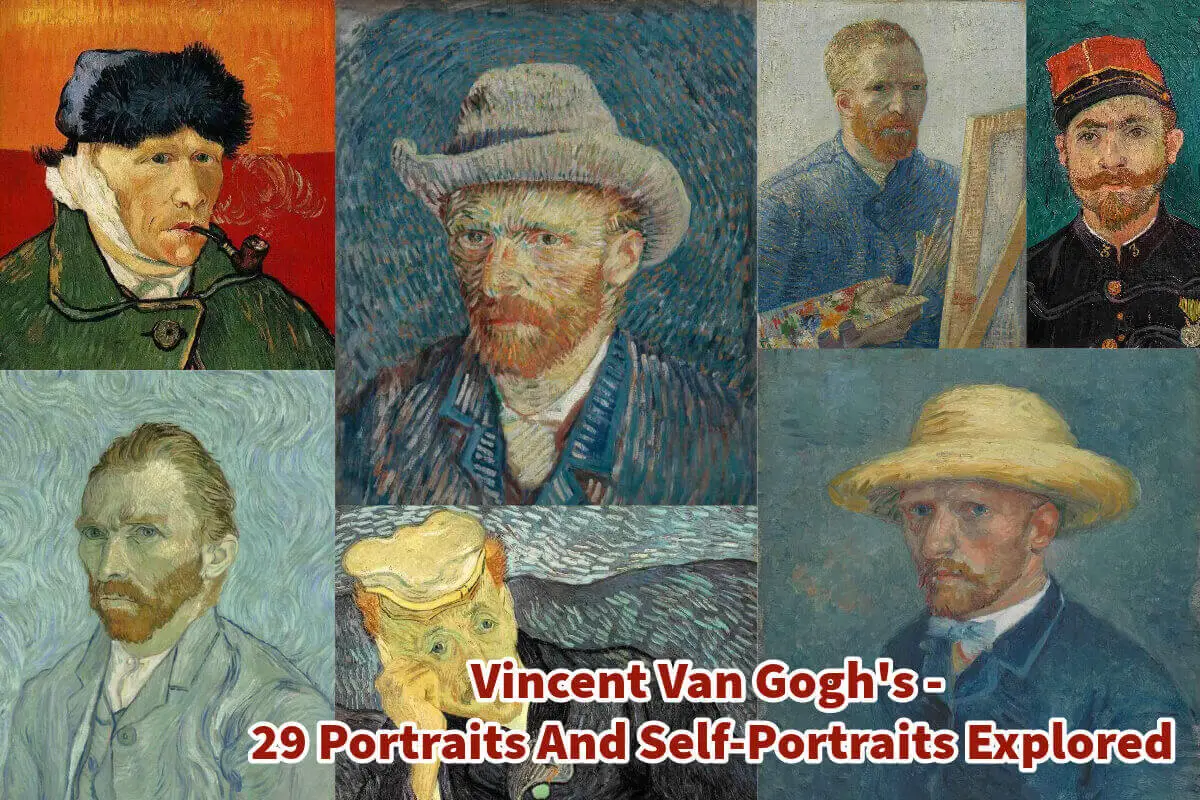Vincent Van Gogh is one of my all-time favorite artists. He is one of the greatest artists who ever lived.
Vincent Van Gogh, undoubtedly one of the greatest artists in history; he 2left a rich legacy of self-portraits and other captivating portraits that provide profound insights into his life and artistic journey. Join us as we delve deeper into the world of Van Gogh’s 20 self portraits. and other portraitures.
Table of Contents
- Vincent Van Gogh’s Enduring Love for Portraits: A Glimpse into the Artist’s Soul
- Portraiture as a Window to the Soul
- 29 Self Portraits and Other Portraits By Vincent Van Gogh
- 1. Self-Portrait (1889)
- 2. Head of a Peasant Woman with White Cap (1885)
- 3. Self-Portrait with Dark Felt Hat at the Easel (1886)
- 4. Self-Portrait with a Straw Hat (1887)
- 5. Self-Portrait (Dedicated to Paul Gauguin) (1888)
- 6. Portrait of a Prostitute (1885)
- 7. The Portrait of Eugène Boch (1888)
- 8. Self-Portrait with Bandaged Ear (1889)
- 9. Self-Portrait with Grey Felt Hat (1887)
- 10. Self-Portrait in Front of the Easel (1888)
- 11. Self-Portrait or Portrait of Theo van Gogh (1887)
- 12. Portrait of the Postman Joseph Roulin (1888)
- 13. Portrait of an Old Man (1885)
- 14. The Smoker (1888)
- 15. L’Arlésienne (1888)
- 16. La Berceuse (Augustine Roulin) (1889)
- 17. Portrait of Paul-Eugène Milliet (1888)
- 18. Portrait of the Artist’s Mother (1888)
- 19. The Zouave (1888)
- 20. Portrait of the Postman Joseph Roulin (1888)
- 21. La Berceuse (Augustine Roulin) (1889)
- 22. Portrait of Camille Roulin (1888)
- 23. Self-Portrait with Bandaged Ear and Pipe (1889)
- 24. The Painter of Sunflowers (Paul Gauguin) (1888)
- 25. Portrait of Dr. Gachet (Second Version) (1890)
- 26. Self-Portrait with Pipe and Straw Hat (1888)
- 27. La Berceuse (Augustine Roulin) (1889)
- 28. L’Arlésienne (1888)
- 29. Self-Portrait with Pipe (1886)
- Related Questions
Vincent Van Gogh’s Enduring Love for Portraits: A Glimpse into the Artist’s Soul
Vincent van Gogh, the iconic Dutch Post-Impressionist painter, is celebrated for his extraordinary ability to convey the depth of human emotion and the intricacies of the human psyche through his portraits.
Read on as we delve into the captivating world of Vincent van Gogh’s portrait paintings, deciphering the profound significance of portraiture in his artistic journey. We will also list and discuss the portraits he created, shedding light on why each one is a masterpiece in its own right.
Portraiture as a Window to the Soul
Portraiture has been an integral part of art throughout history, serving as a medium to capture the essence of individuals and their stories.
For Vincent van Gogh, portraits were not just a subject matter but a profound means of connecting with the human spirit. His fascination with portraiture can be attributed to several significant reasons:
1. A Mirror to Emotions
Van Gogh was deeply invested in exploring the human experience and the emotions that define it. Portraits allowed him to delve into the inner worlds of his subjects, capturing their joys, sorrows, and complexities. Through his distinctive brushwork and use of color, he could convey the raw intensity of human emotion.
2. A Search for Connection
Throughout his life, Van Gogh grappled with feelings of isolation and a longing for connection. Painting portraits gave him a sense of communion with his subjects, allowing him to bridge the gap between himself and others. Each portrait became a bridge to empathy and understanding.
3. An Artistic Challenge
Portraiture presented Van Gogh with a formidable artistic challenge. Capturing the likeness and character of individuals required meticulous observation and technical precision. He relished this challenge, using it as an opportunity to hone his skills and push the boundaries of his art.
4. A Visual Diary
Many of Van Gogh’s portraits were of people he knew intimately, including family members, friends, and fellow artists. These portraits served as a visual diary of his life, documenting the people who played significant roles in his journey as an artist and a human being.
29 Self Portraits and Other Portraits By Vincent Van Gogh
Vincent Van Gogh painted many self-portraits and other portraits.
Let’s explore the remarkable portraits created by Vincent van Gogh, each a testament to his deep connection with the human spirit and his mastery of the art form:
1. Self-Portrait (1889)
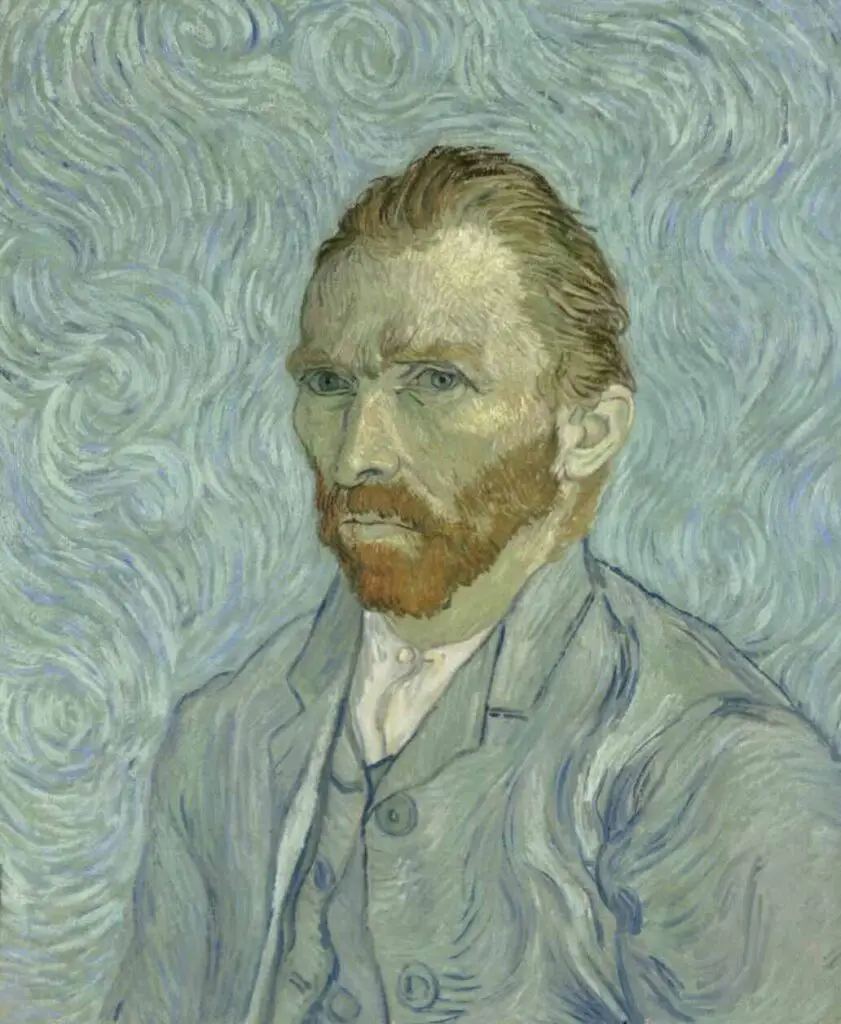
Van Gogh’s self-portraits are a compelling exploration of his psyche. In this 1889 self-portrait, the artist confronts the viewer with an intense gaze, his brushwork and colors conveying the tumultuous emotions within him during this period.
2. Head of a Peasant Woman with White Cap (1885)
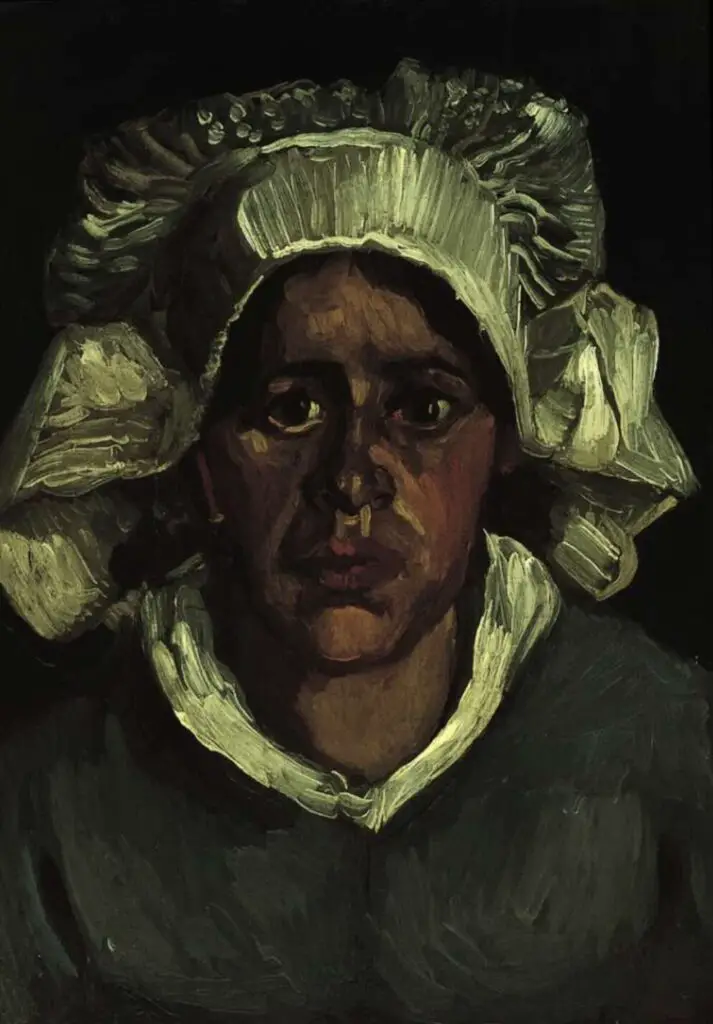
“Head of a Peasant Woman in a White Bonnet” is a poignant portrayal of rural life. Van Gogh’s attention to detail and the somber expression on the subject’s face capture the hardships and resilience of the peasant class.
3. Self-Portrait with Dark Felt Hat at the Easel (1886)

This self-portrait from 1886 showcases Van Gogh’s signature use of color to convey emotion. The darkened hat and the vibrant background create a stark contrast, reflecting the artist’s inner turbulence.
4. Self-Portrait with a Straw Hat (1887)

In “Self-Portrait with a Straw Hat” from 1887, Van Gogh portrays himself with a sense of serenity. The straw hat and the sunlit background evoke a feeling of warmth and tranquility, a departure from some of his more intense self-portraits.
5. Self-Portrait (Dedicated to Paul Gauguin) (1888)
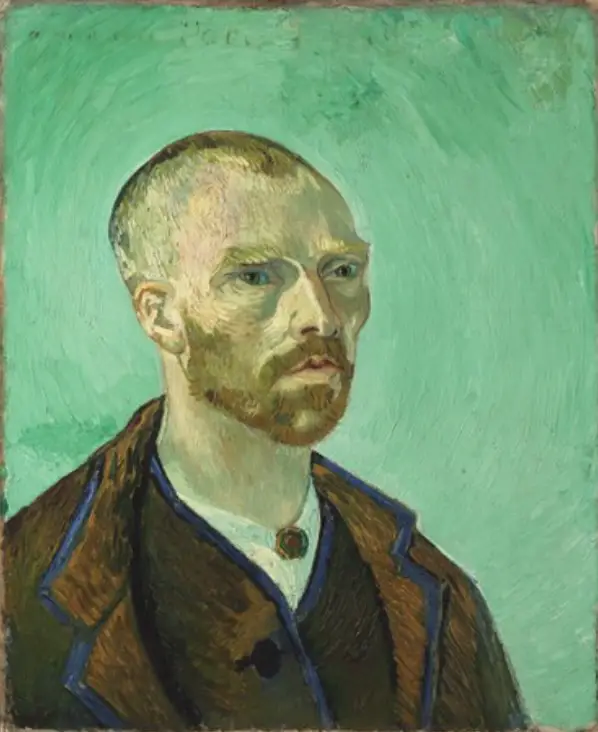
This self-portrait from 1888, dedicated to his friend and fellow artist Paul Gauguin, reveals Van Gogh’s desire for companionship and artistic camaraderie. The intensity in his eyes conveys his passion for art and his connection with Gauguin.
6. Portrait of a Prostitute (1885)

This poignant portrait from 1885 depicts a woman who was likely a prostitute in a Dutch brothel. Van Gogh’s empathetic portrayal transcends judgment, revealing the humanity in his subjects.
7. The Portrait of Eugène Boch (1888)
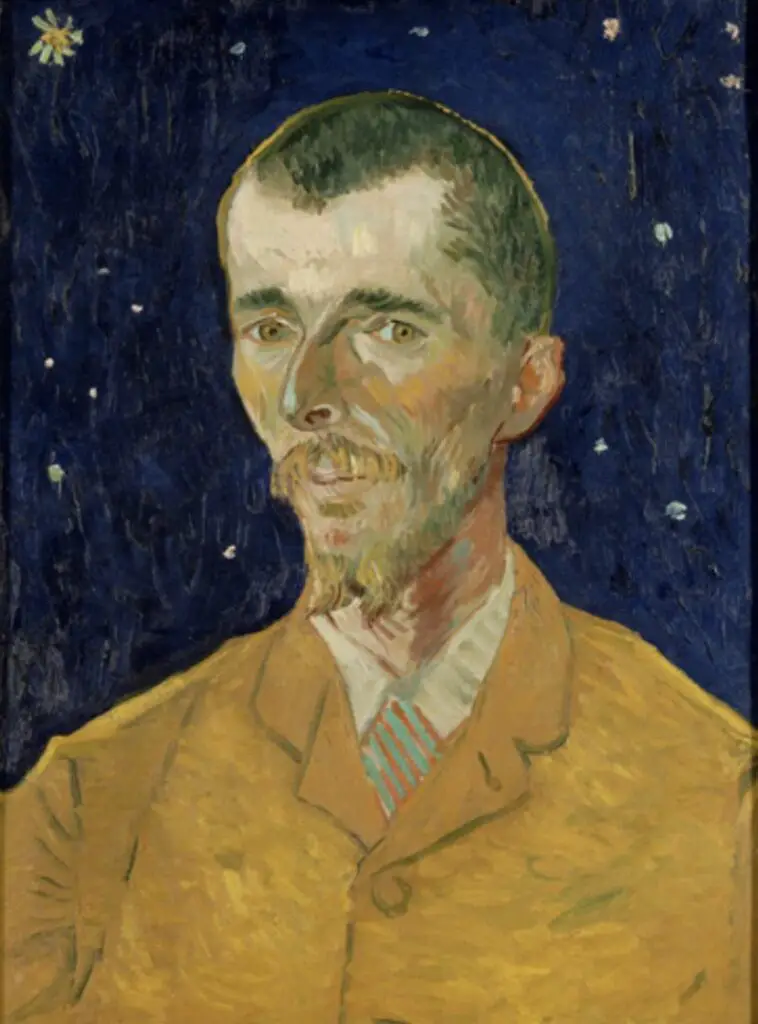
Eugène Boch, a fellow artist and friend of Van Gogh, is immortalized in this 1888 portrait. The vibrant blue background and the intensity of Boch’s gaze capture the artist’s mastery of color and expression.
8. Self-Portrait with Bandaged Ear (1889)

One of Van Gogh’s most iconic self-portraits, this painting from 1889 reveals his resilience in the face of adversity. The bandaged ear is a powerful symbol of his mental and emotional struggles.
9. Self-Portrait with Grey Felt Hat (1887)
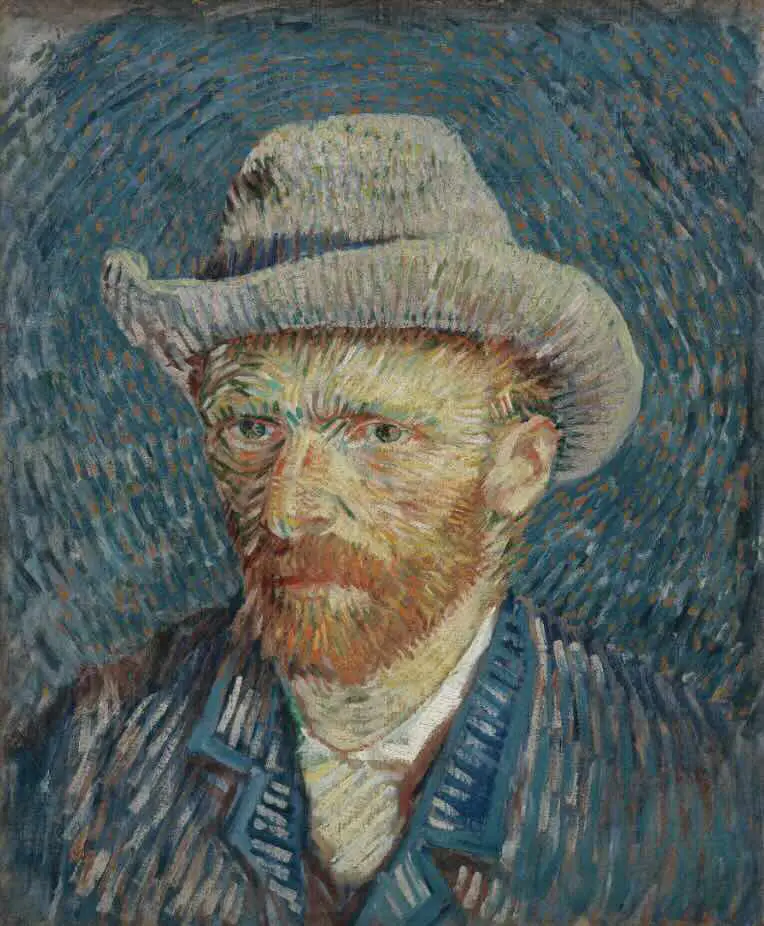
This self-portrait from 1887 radiates a sense of self-assuredness. The muted color palette and the confident pose convey a moment of introspection and self-reflection.
10. Self-Portrait in Front of the Easel (1888)
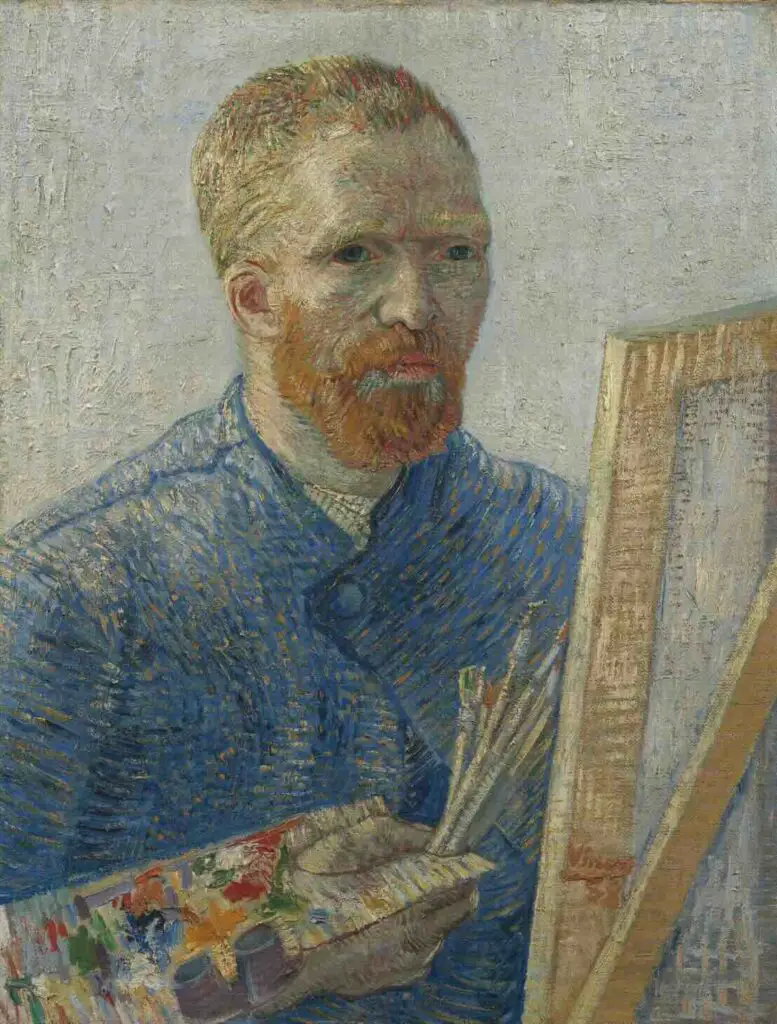
Van Gogh’s self-portraits often feature him in the act of painting, reflecting his deep connection with his craft. In this 1888 self-portrait, the artist’s gaze is fixed on the viewer, inviting us into his artistic world.
11. Self-Portrait or Portrait of Theo van Gogh (1887)
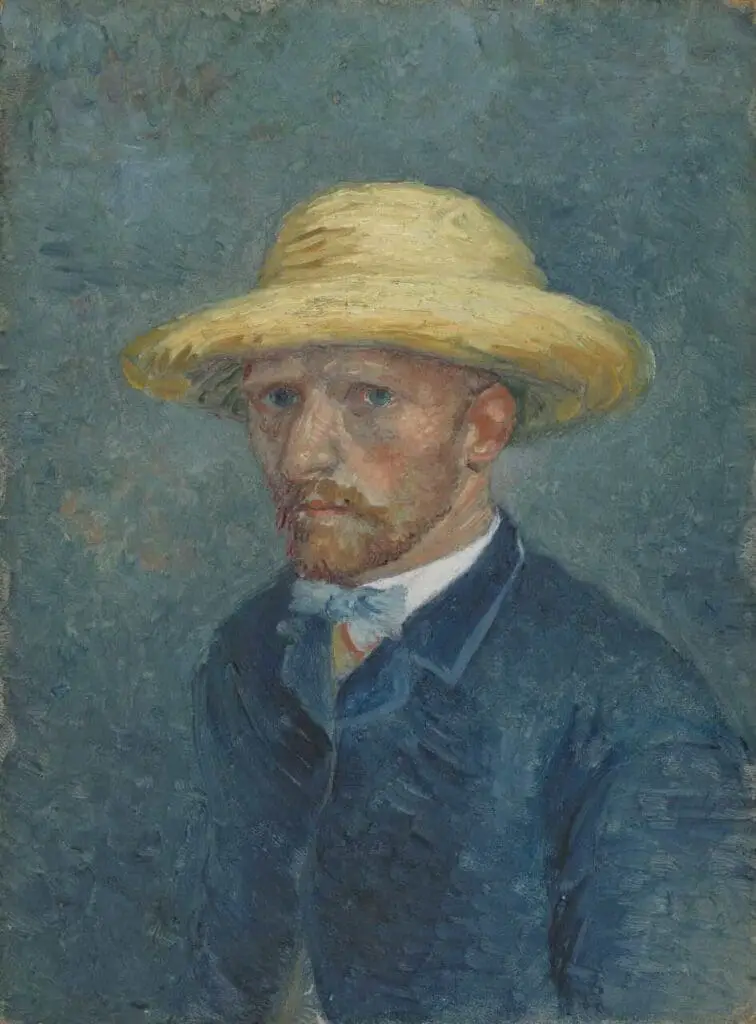
This portrait, created in 1887, blurs the line between a self-portrait and a portrait of his beloved brother, Theo van Gogh. The connection between the two brothers is palpable in this intimate depiction.
12. Portrait of the Postman Joseph Roulin (1888)

Van Gogh’s friendship with the postman Joseph Roulin is immortalized in this 1888 portrait. The bold use of color and the postman’s distinctive features make this painting a vibrant tribute to their friendship.
13. Portrait of an Old Man (1885)
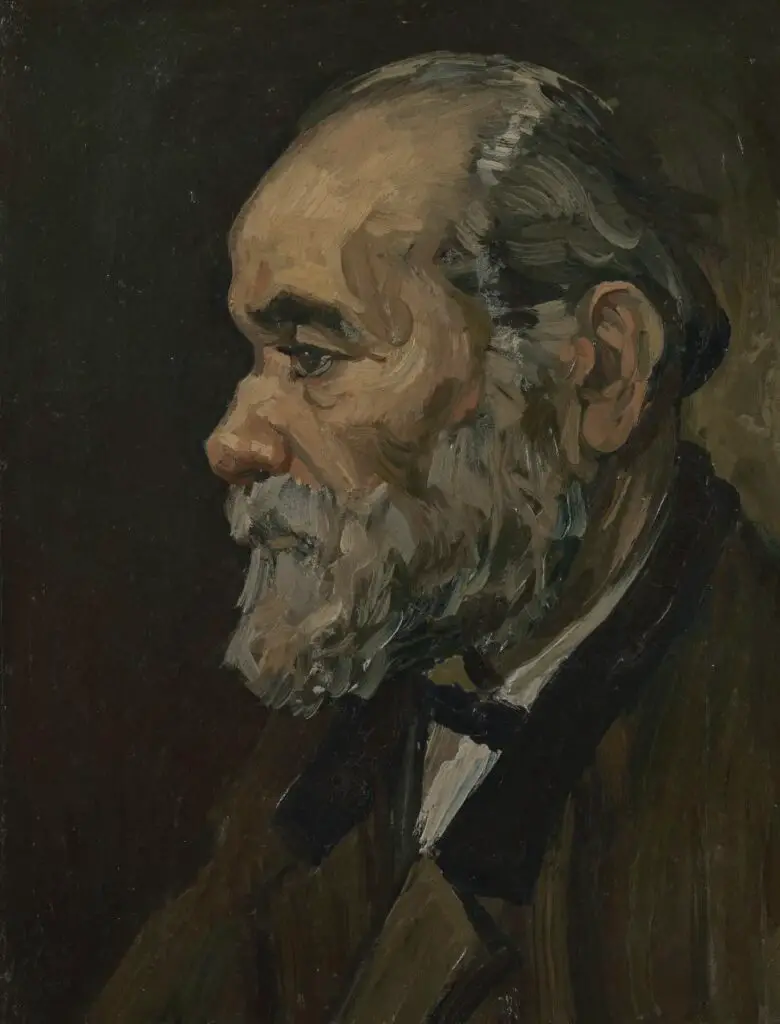
This 1885 portrait captures the wisdom and character etched into the face of an older man. Van Gogh’s meticulous attention to detail brings the subject to life, creating a profound connection between the viewer and the sitter.
14. The Smoker (1888)

“The Smoker” is a captivating portrait from 1888, depicting a man in a moment of quiet reflection. Van Gogh’s use of light and shadow adds depth to the composition, highlighting the man’s contemplative expression.
15. L’Arlésienne (1888)
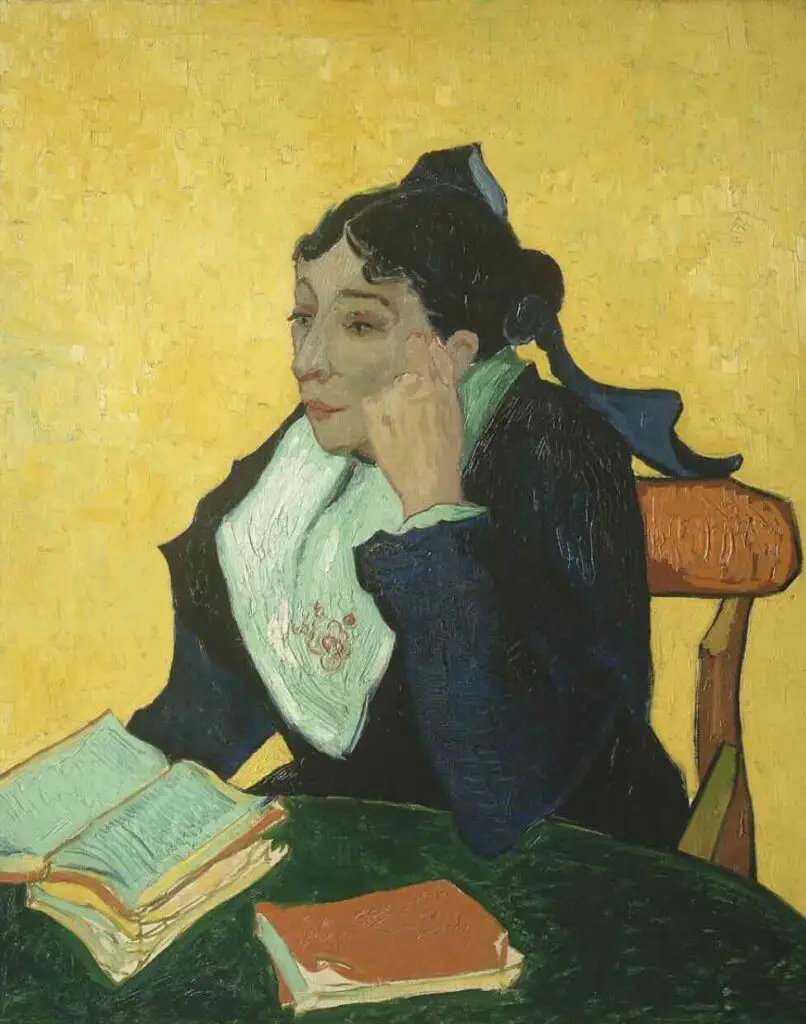
“L’Arlésienne,” painted in 1888, is a series of portraits featuring a woman from Arles who posed for Van Gogh multiple times. These portraits reflect his fascination with capturing the essence of a single subject through various angles and moods.
16. La Berceuse (Augustine Roulin) (1889)

“La Berceuse” is a series of portraits featuring Augustine Roulin, a friend of the artist. In these 1889 portraits, Van Gogh explores the theme of maternal care and the soothing presence of the berceuse, or lullaby singer.
17. Portrait of Paul-Eugène Milliet (1888)
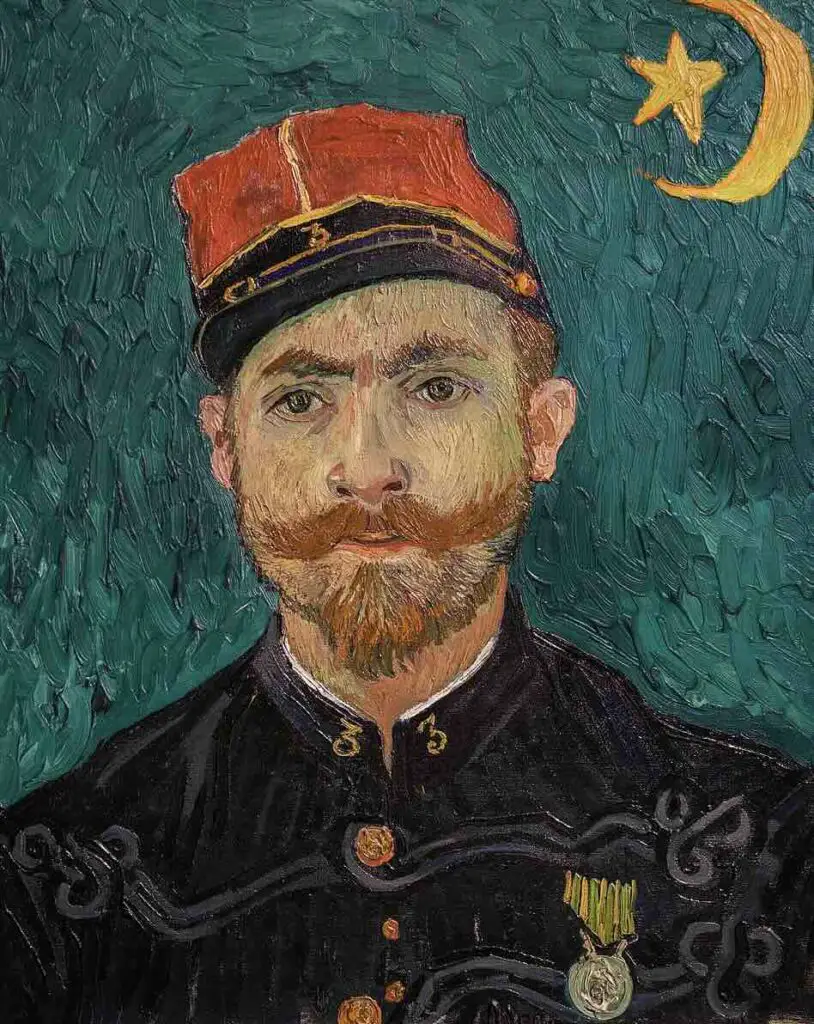
This portrait from 1888 showcases Van Gogh’s ability to capture the individuality of his subjects. The young man’s pensive expression is rendered with precision, making the viewer feel like they are in the sitter’s presence.
18. Portrait of the Artist’s Mother (1888)
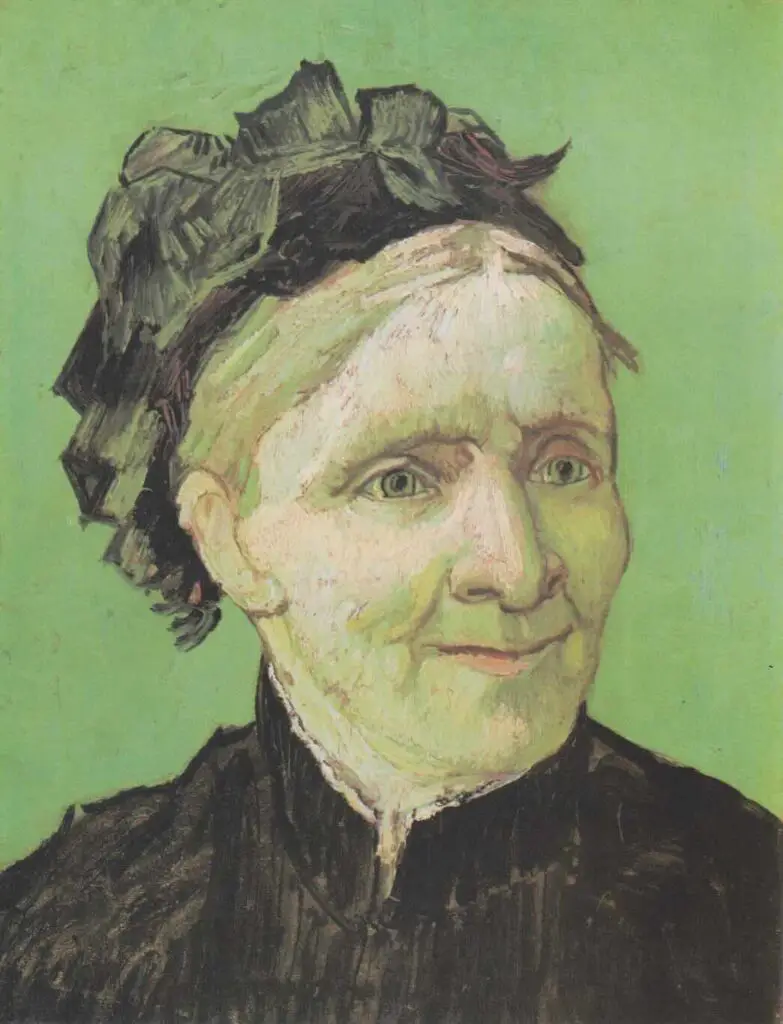
In this tender portrait from 1888, Van Gogh depicts his mother, Anna Carbentus van Gogh. The warmth and affection in the painting reflect the artist’s deep love for his family.
19. The Zouave (1888)

“The Zouave,” painted in 1888, is a striking portrait of a soldier. Van Gogh’s vivid colors and bold brushwork add a sense of vitality to the subject, capturing the soldier’s spirit.
20. Portrait of the Postman Joseph Roulin (1888)

Joseph Roulin, the postman and friend of Van Gogh, is portrayed in this 1888 portrait. The artist’s bold, swirling brushstrokes create a dynamic and expressive portrayal of his friend.
21. La Berceuse (Augustine Roulin) (1889)
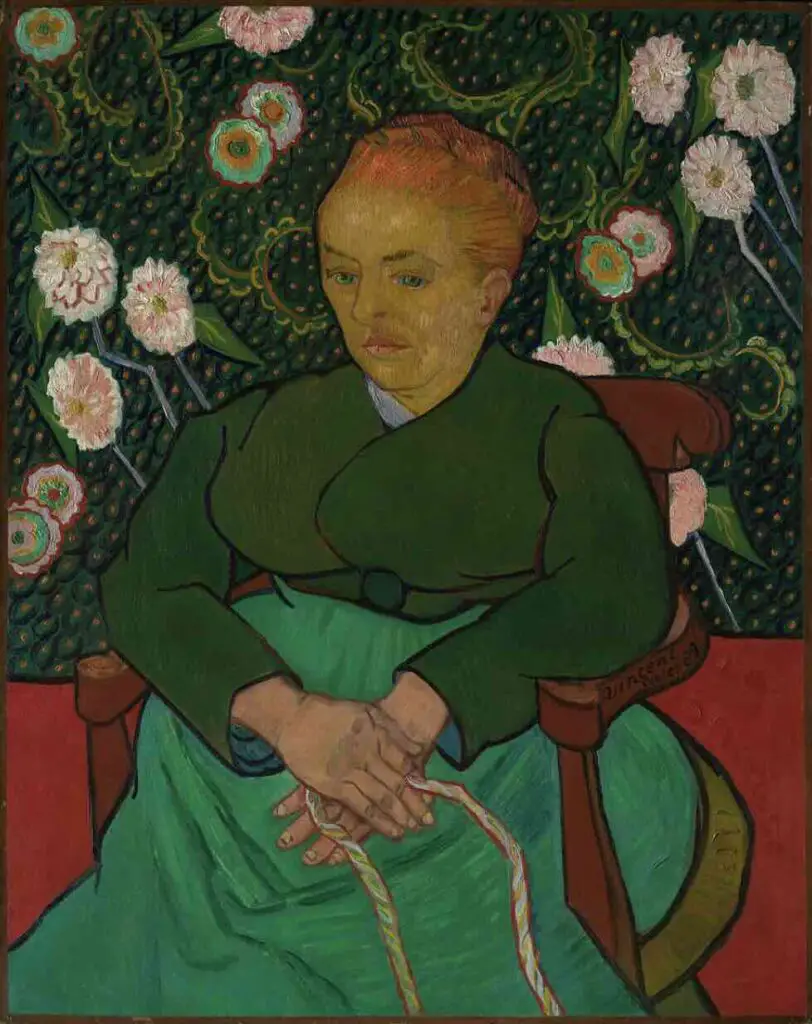
Augustine Roulin is featured once again in this 1889 portrait. Van Gogh’s exploration of different angles and poses in the “La Berceuse” series showcases his fascination with capturing the nuances of a single subject.
22. Portrait of Camille Roulin (1888)

Camille Roulin, the wife of Joseph Roulin, is the subject of this 1888 portrait. Van Gogh’s attention to detail and the warm color palette convey a sense of intimacy and familiarity.
23. Self-Portrait with Bandaged Ear and Pipe (1889)
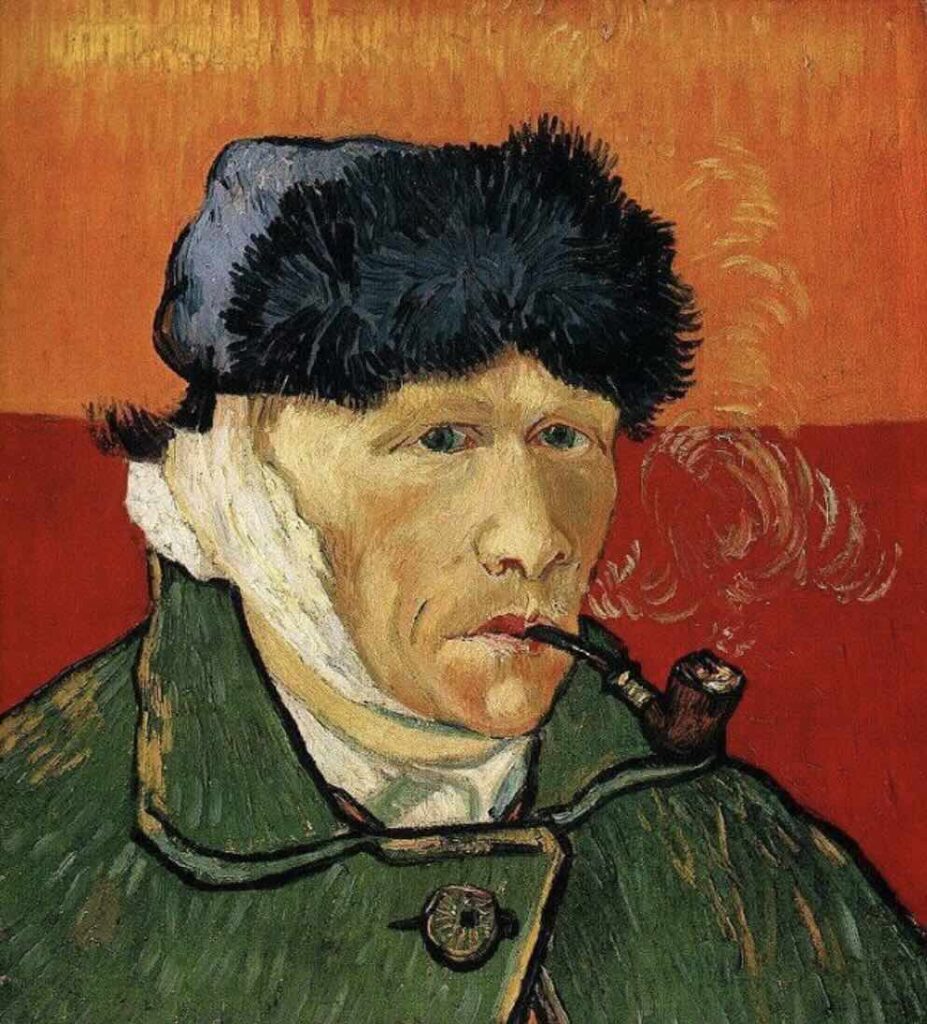
This self-portrait from 1889 is a poignant reflection of Van Gogh’s resilience. The bandaged ear is a visual reminder of his struggles, while the pipe adds a sense of contemplation.
24. The Painter of Sunflowers (Paul Gauguin) (1888)
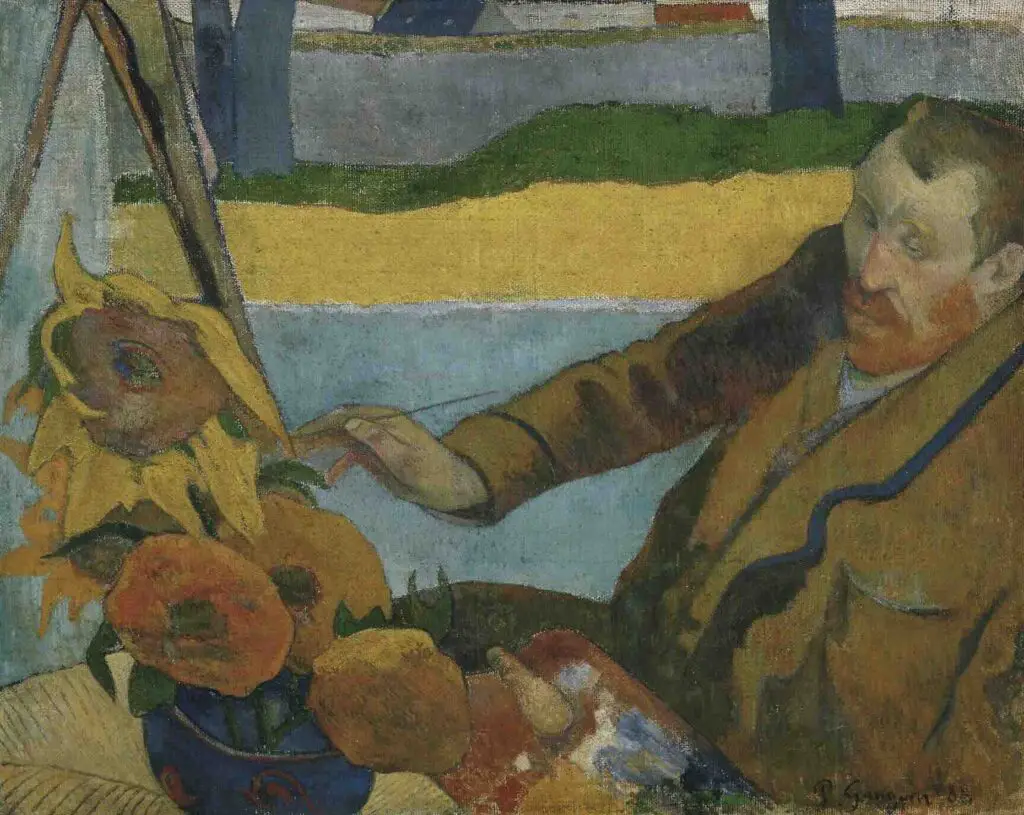
In this portrait from 1888, Van Gogh pays tribute to his friend and fellow artist Paul Gauguin. Using color and texture adds depth to Gauguin’s likeness, reflecting their shared passion for art.
25. Portrait of Dr. Gachet (Second Version) (1890)
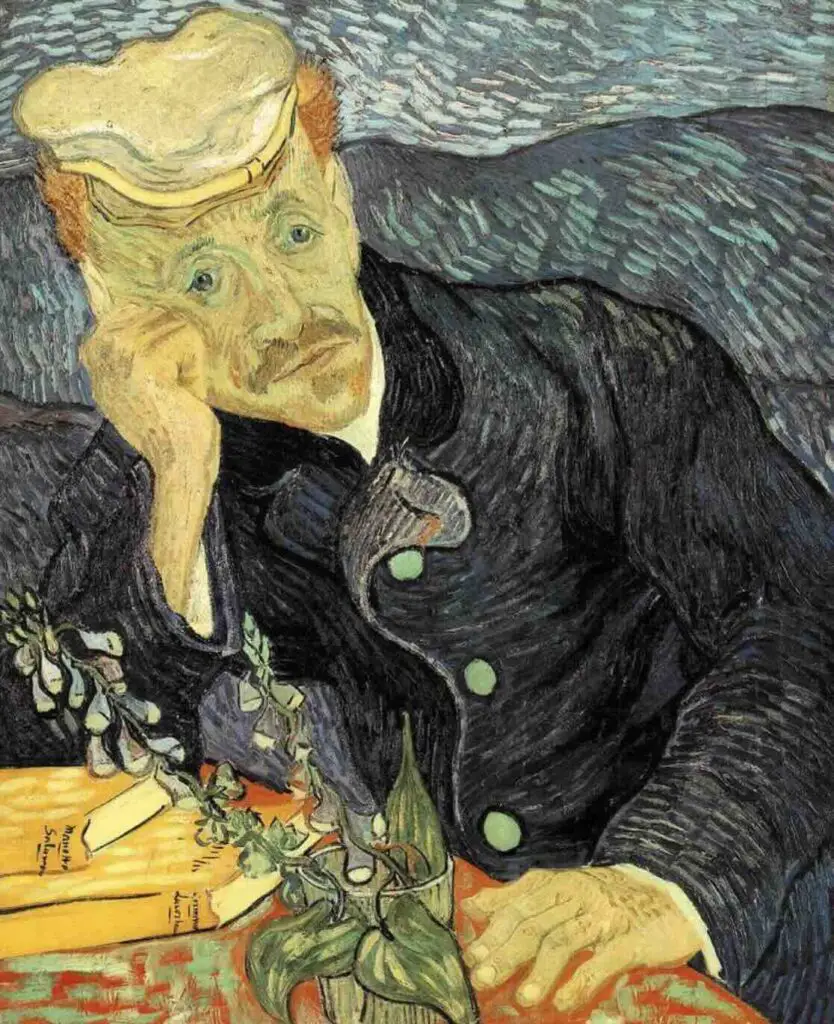
“Portrait of Dr. Gachet” is a poignant depiction of Dr. Paul Gachet, Van Gogh’s physician in Auvers-sur-Oise. The second version, painted in 1890, conveys the complexity of the doctor’s personality and his role in Van Gogh’s life.
26. Self-Portrait with Pipe and Straw Hat (1888)

This self-portrait from 1888 showcases Van Gogh in a moment of creative contemplation. The straw hat and the vibrant background evoke a sense of warmth and tranquility.
27. La Berceuse (Augustine Roulin) (1889)
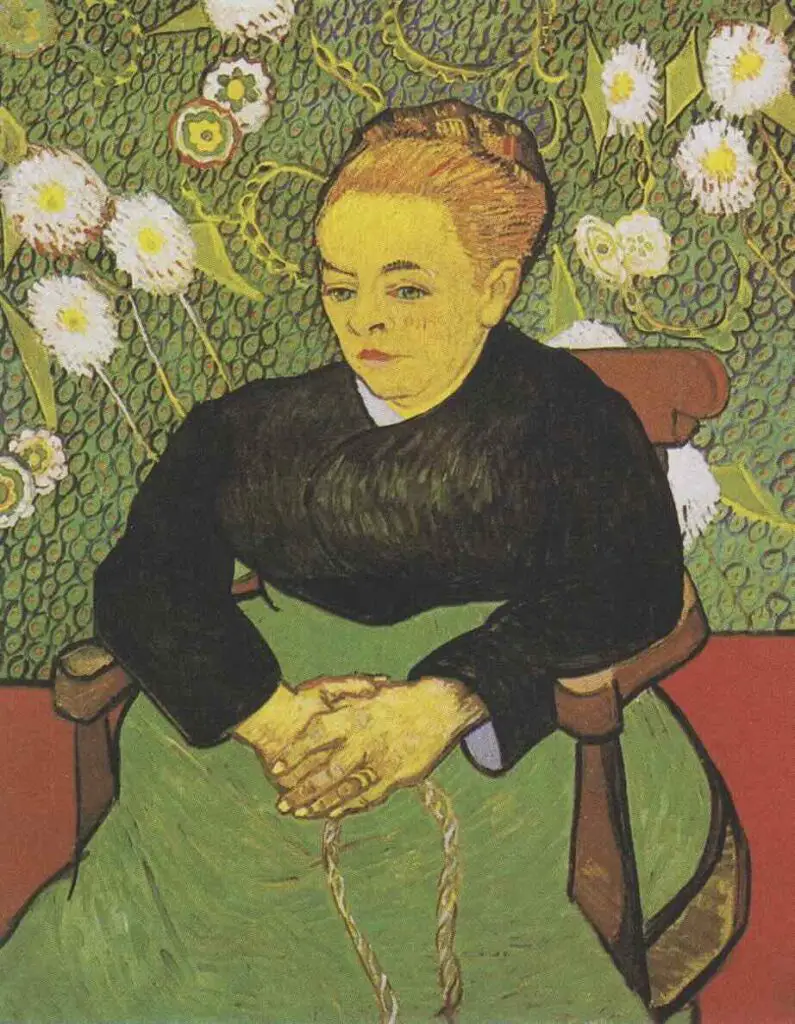
Augustine Roulin appears again in this 1889 portrait, part of the “La Berceuse” series. Each portrait in the series explores different facets of her personality and her role as a lullaby singer.
28. L’Arlésienne (1888)
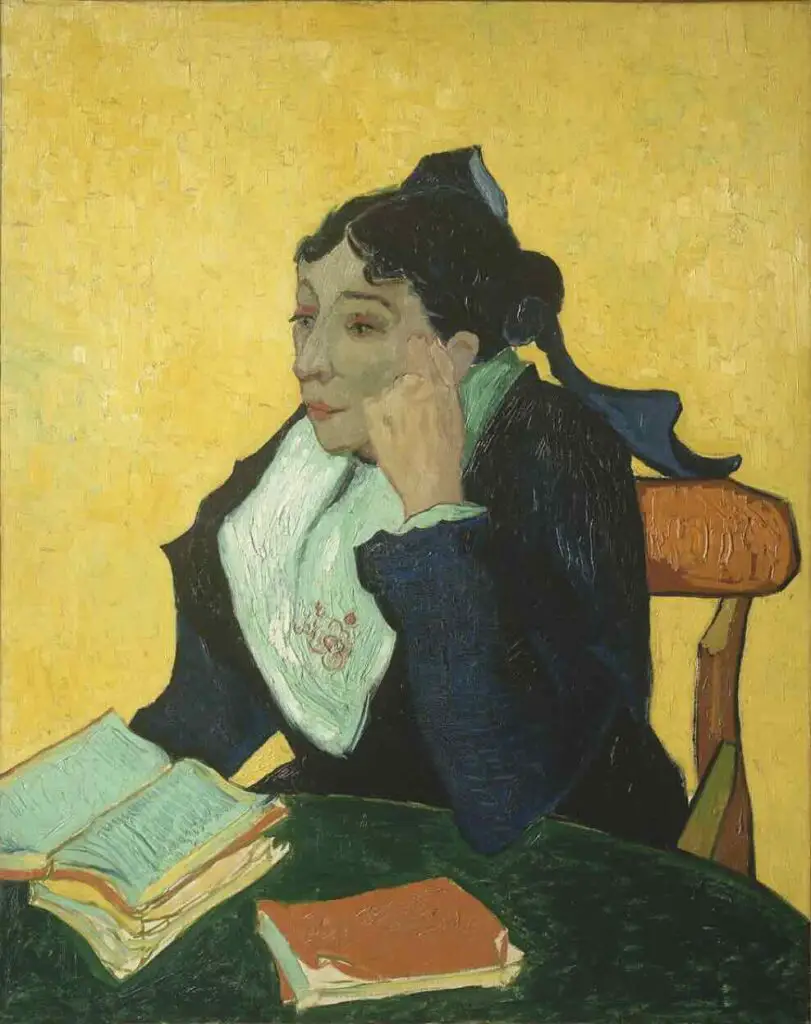
L’Arlésienne,” a series of portraits from 1888, features a woman from Arles who posed for Van Gogh multiple times. The varying poses and expressions in the series showcase the artist’s fascination with capturing the complexity of a single individual.
29. Self-Portrait with Pipe (1886)

In this 1886 self-portrait, Van Gogh presents himself with a pipe, symbolizing relaxation and contemplation. The use of color and brushwork adds depth to his introspective expression.
Vincent van Gogh’s portraits are not mere representations of individuals; they are windows into the human spirit and the artist’s journey of self-discovery. Through his mastery of color, brushwork, and emotion, he immortalized the essence of his subjects, inviting us to contemplate the complexities of the human experience.
Each portrait is a testament to his enduring love for humanity and his unrelenting passion for the art of capturing life on canvas.
Anita Louise Art is dedicated to art education, great artists, and inspiring others to find and create their art. We love art that uplifts and inspires. #ArtToMakeYouSmile! #ArtToMakeYouHappy!
If you want to see any of my art, you can find out more by clicking here. If you are interested in what inspires me and my paintings, you can discover more by clicking here.
We have a free newsletter and would love you to be part of our community; you can subscribe to the newsletter by clicking here. If you have any questions, I would be happy to talk to you anytime. You can reach me, Anita, by clicking here.
Subscribe to our Anita Louise Art YouTube Channel with great videos and information by clicking here.
Join us for our podcast “5 Minutes With Art.” Spend just 5 minutes a week with us to discover and learn about great art and artists. You can find out more about our podcast by clicking here.
Related Questions
Vincent Van Gogh Is Known For His Art And Life
He is one of the world’s most renowned and celebrated artists today. Van Gogh’s legacy is defined not only by his captivating artwork but also by his extraordinary skill and passion for executing every brushstroke. Join us as we delve deeper into the world of this remarkable artist and unravel the reasons behind his enduring fame and the profound impact of his artistry.
By clicking here, you can learn more by reading Vincent Van Gogh Is Known For His Art And Life.
Vincent Van Gogh Roses 1889 And Flower Paintings
Vincent Van Gogh had a profound affinity for painting flowers, and one of his notable works in this genre is titled “Roses.” Join us as we delve into the enchanting world of his “Roses” painting and uncover the eight compelling reasons that fueled his passion for painting flowers.
By clicking here, you can learn more by reading Vincent Van Gogh Roses 1889 And Flower Paintings.
Vincent Van Gogh – The Langlois Bridge – 1888
While some of his works, like “The Langlois Bridge – 1888,” may be lesser-known than many other Van Gogh paintings, the painting offers a unique perspective into van Gogh’s life during a pivotal period. This artwork provides a glimpse into his surroundings during a crucial juncture in his artistic journey. Read on as we delve deeper into this painting to better understand the world Van Gogh was showing us with this artwork.
By clicking here, you can learn more by reading Vincent Van Gogh – The Langlois Bridge – 1888.

